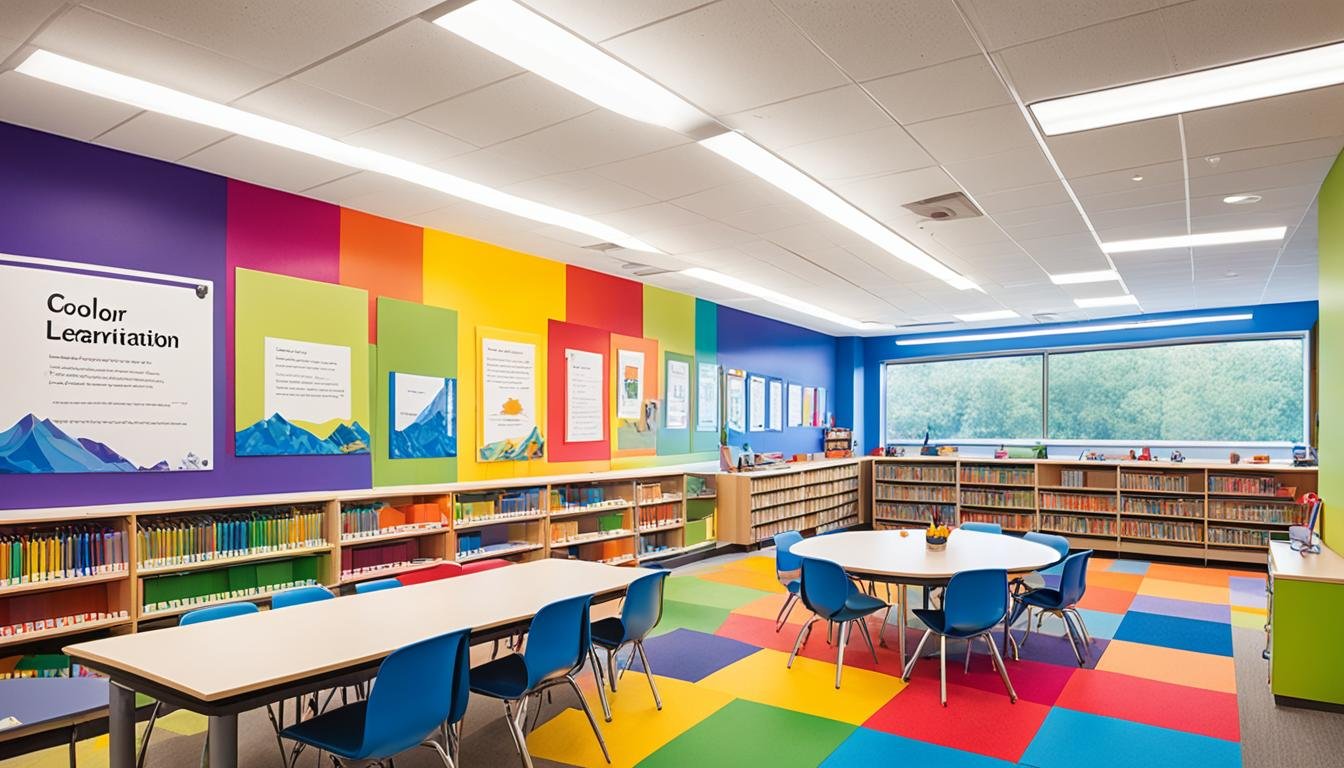Can color affect learning?
When it comes to education, we often focus on teaching methods, curriculum design, and instructional materials. But have you ever wondered if something as simple as color could impact the learning process? Can the colors we see in our environment actually influence our cognition, attention, and memory performance? Let’s delve into the fascinating world of color and education to explore the effects it may have on how we learn.
Key Takeaways:
- The use of colors in instructional materials can capture learners’ attention and stimulate their emotions.
- Warm colors like red, orange, and yellow can maintain learners’ attention and increase their active participation.
- Colors play a significant role in memory performance, influencing the transfer of information to short-term and long-term memory.
- Certain colors, such as blue, can enhance the recall of information.
- Colors can evoke different emotional responses in learners and influence their behavior and performance.
The Impact of Colors on Memory Performance
In this section, we will explore how colors can have a significant influence on memory performance. Understanding the relationship between color and memory retention is crucial for optimizing the learning experience.
The structure of memory consists of sensory memory, short-term memory, and long-term memory. Colors play a role in enhancing memory performance by facilitating the transfer of information from sensory memory to short-term and long-term memory.
Research has shown that certain colors have a positive effect on memory recall. Blue, for example, has been found to enhance the retention and recall of information. By incorporating blue in learning materials and environments, learners can improve their memory retention and recall capabilities.
In addition to memory retention, colors also impact learners’ cognitive loads. Cognitive loads refer to the mental effort required to process information. By using color-coded information visualizations, educators can reduce the extraneous cognitive load, making it easier for learners to acquire and process knowledge.
In summary, colors have a significant impact on memory performance and cognitive loads. Incorporating the right colors in educational materials and environments can enhance learners’ memory retention and reduce cognitive load. The use of color-coded information visualizations is a powerful tool in facilitating knowledge acquisition. By understanding the effect of colors on memory performance, educators can optimize the learning experience and maximize learning outcomes.
Key Takeaways:
- Colors influence memory performance by facilitating the transfer of information to long-term memory.
- Blue is a color that enhances memory retention and recall.
- Color-coded information visualizations reduce cognitive load and facilitate knowledge acquisition.
Colors, Emotions, and Cognition
Colors have a profound impact on cognition and can also influence learners’ emotions. The relationship between color and cognition is closely tied to the way different colors evoke emotional responses and moods in learners. By understanding this connection, educators can create learning environments that promote positive emotional states, motivation, and engagement.
For instance, the color red is often associated with energy and passion, making it a stimulating color choice for learning activities that require high levels of focus and concentration. On the other hand, blue is known for its calming properties and has been linked to relaxation and creativity. Incorporating blue into the learning environment can foster a sense of tranquility and promote creative thinking.
Positive emotions play a crucial role in enhancing learners’ recall and memory. When learners experience positive emotions, they are more likely to retrieve positive information from their long-term memory. Selecting colors that elicit positive emotions can therefore improve learners’ ability to retain and recall information.
Moreover, colors can influence learners’ behavior, performance, and intentions. By strategically choosing colors in learning environments, educators can create an atmosphere that supports desired outcomes. For example, warm colors like yellow and orange can create a sense of enthusiasm and energy, while green can inspire calmness and focus.

“The use of color in education can have a profound impact on learners’ emotions and cognition. By considering the relationship between color and mood, educators can create an environment that fosters positive emotional states and facilitates effective learning.”
Conclusion
The impact of color on learning outcomes and educational experiences is undeniable. By understanding the influence of colors on learners’ cognition, emotions, and memory performance, we can create effective instructional materials and learning environments.
Strategically using colors to capture attention, stimulate emotions, and promote active participation enhances learners’ engagement and information retention. Colors such as red, blue, yellow, purple, orange, and green each have distinct effects on learners and can be utilized in various ways to support different aspects of the learning process.
By thoughtfully incorporating color into educational settings, we can greatly enhance the learning experience and contribute to better educational outcomes. It is important to recognize the potential of color to impact learners and harness its power to create enriching and engaging educational experiences.






